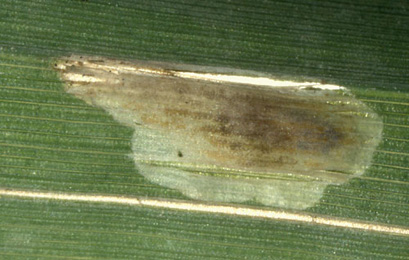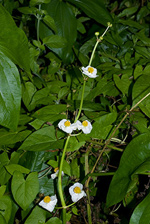|
||||||
|
SAGITTARIA. Arrowheads. [Alismataceae] |
|
|
Four species of Sagittaria are recorded in Britain - Arrowhead (S. sagittifolia), Duck-potato (S. latifolia), Canadian Arrowhead (S. rigida), and Narrow-leaved Arrowhead (S. subulata). Two British miners are recorded on Sagittaria. A key to the European miners recorded on Sagittaria is provided in Bladmineerders van Europa. |
|
Key for the identification of the known mines of British |
1a > Leaf-miner: Irregular mine, locally shallow, elsewhere much deeper, giving it a mottled appearance. In broadleaved plants the mine often begins as a blotch with stellate extensions, but sometimes as a very fine, shallow corridor. In grasses the mine often begins in the leaf sheath. The frass is very fine-grained, initially scattered, later in aggregates. The egg is deposited on the plant surface, and the empty egg shell remains visible. But the larvae are able to leave their mine and restart elsewhere, thus mines without an egg shell can be found as well. The larva also leaves the mine before pupation. Pupation takes place in a newly made, small, blotch mine without frass; this mine may be made in another plant (species). |
 Mine of Hydrellia griseola on Glyceria fluitans Image: © Willem Ellis (Bladmineerders van Europa) |
|
Hydrellia griseola (Fallén, 1813) [Diptera: Ephydridae]. |
1b > Leaf-miner: The mine starts with a broad corridor. Later a broad blotch, not determined by heavy veins. The mine is full depth and very transparent. The colour in the end is reddish-brown, making mined plants very conspicuous, even from a distance. Frass irregular. Often several larvae in a mine. |
|
Bagous alismatis (Marsham, 1802) [Coleoptera: Curculionidae]. |
| Last updated 07-Jul-2019 Brian Pitkin | ||

